It is time for a festive Q&A! In this episode, we are going to be answering your questions such as, does another planet Earth exist? Can robots be as creative as humans? And why do deep sea creatures glow? Our panel of scientific superstars taking on your queries this month are science song-writer Raven Baxter, deep-ocean diver Diva Amon, exoplanet explorer Hannah Wakeford and intelligence investigator Beth Singler.
In this episode
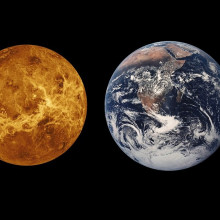
06:24 - Could another planet Earth exist?
Could another planet Earth exist?
Julia Ravey spoke to Hannah Wakeford from the University of Bristol who researches planets outside our solar system about how it is possible to get up close with objects so far away...
Hannah - That's a really good question and it's not easy, but what we're doing is we're looking for light. That's what astronomy is, we always are just dealing with light around things. We're seeing the reflections of light from the sun off those asteroids, or we're seeing the light that they emit themselves. Another thing that's good about these asteroids is because they're so close to us, they move really quickly, and because they're moving really quickly, we can see that there's something moving relative to the stars, which appear static in our pictures. If we can see this little bit of light moving through our pictures, that might be an asteroid.
Julia - And what types of planets do you study?
Hannah - I primarily study giant planets. These are things that are made mostly of hydrogen and helium. They don't have a surface that you would think of. They're very, very puffy. And the ones that I particularly am interested in are the ones that are really close to their stars. So they're hot as well. When you heat up an atmosphere you change the chemistry, you change the wind structure, and you change the way that that planet orbits around its star. There's a lot of interesting things that we're trying to understand. How big of a difference does that make?
Julia - And that type of planet doesn't sound like one that we could maybe move to many years down the line. Do you think that could be another Earth out there?
Hannah - We've been looking across the whole sky for exoplanets and we found nearly 5,000 of them that have been confirmed as real planets orbiting other stars. Out of those planets, we think that there are hundreds and thousands of planets that are rocky terrestrial worlds. We know that there are rocky planets the same size as the earth and we know that before we even started looking for exoplanets because we have one next door to us, it's called Venus. It is our twin sister planet. It is the same size and mass as the earth and it is a rocky planet. So we already knew that planets like ours were out there, but the important thing here is those little differences. We live on this lovely planet called Earth and it is pretty nice, good temperatures, a little bit cold in the UK today. But Venus is a hellish world; It has an incredibly thick atmosphere, the temperatures on the surface are 700 degrees, you would melt and be crushed. It's a horrible place, but they're rocky planets that are roughly the same size. What we're trying to understand about exoplanets is what are those little differences? If we find a rocky planet that is about the size of the earth, is that really an Earth-like planet?
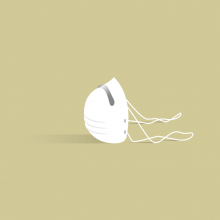
09:40 - Pandemic vs Endemic: What's the difference?
Pandemic vs Endemic: What's the difference?
Julia Ravey asked Raven Baxter, a molecular biologist and science educator from the UC Irvine in California about the difference between pandemic and endemic, and what this means for SARS-CoV-2.
Raven - Viruses need a living host to reproduce themselves because they use the machinery that are inside of cells to replicate. However, they don't just exist in humans. Viruses can infect bacteria, plants and different kinds of animals in addition to humans. In that sense, they can be outside of a body, but they can't exist really without living things to use for their own destruction.
Julia - Sean has also written in to ask about what is the line between 'alive' and 'not alive' when it comes to thinking about bacteria versus a virus?
Raven - This is a debate and I learned this early on in the pandemic because I said, 'viruses aren't living.' Then a slew of people came through and said, 'well actually...' Some people do believe that viruses are living and they feel like our definition of what's living and non-living is nuanced in a way, especially because of some things that we've learned about super viruses or mega viruses. But in my opinion, living things are able to grow and reproduce on their own and that is where I draw the line.
Julia - In the UK, there's been talk that we may be one of the first countries where the virus that causes COVID-19 might move from a 'pandemic' to an 'endemic'. What does that mean?
Raven - In my own words, an 'endemic' means that it is going to move from something that is more so a larger/urgent threat to something that kind of exists in the background of all of the other things that are already around. For example the seasonal flu. The thought is that eventually this may happen with the SARS-CoV-2 virus. However it's still a very urgent situation right now because it is a new virus that we don't understand. It is evolving quickly and mutating at a rate where we can't really afford to wait for it to become endemic. We definitely want to keep as many people healthy and save as many lives as possible.

12:08 - Can robots be creative?
Can robots be creative?
Julia Ravey spoke to Junior research fellow at Homerton College, Cambridge Beth Singler, on how close we are getting to robots being taken as human...
Beth - Unfortunately, that day is long gone. In terms of our ability to anthropomorphize robots and forms of AI that appear on social media, or we see robots as being more person like than the technology actually allows. So underpinning that question for a lot of people is the fear about AI and robots passing for human, which comes from a lot of our science fiction accounts of where technology is going. There's that sort of underlying anxiety in that question, but in terms of day-to-day interactions with technology, humans are very easily convinced that they're already dealing with something that's human-like when it's not.
Julia - And Ajay wrote in to ask what is the difference between 'algorithms' and 'artificial intelligence'?
Beth - The term 'artificial intelligence' is much newer than the term 'algorithm'. You can think of algorithms like a recipe or a series of instructions. This has appeared in our human activities in maths and science for a very long time. But in applying this towards the goal of artificial intelligence, that is the overall field, and aim that people are heading towards. We didn't get to this point in our history until about the 1950s, where a group of computer scientists got together and said, "Hey, let's see if we can create intelligence in this artificial way." And that leads into a big debate about 'what actually is intelligence?' 'What kind of things are we aiming for when we describe intelligence?'' Is it the same thing exactly that humans have, which is so embodied and communal?' You can kind of think of the algorithm as the building block towards this thing we call 'Artificial Intelligence'.
Julia - We pride ourselves on being really creative and think that that element of us is safe from an AI takeover, but artificial intelligence technology managed to complete an unwritten symphony by Beethoven. So can our creativity be boiled down to just patterns that can be recognized?
Beth - I think we prioritize in our human definition of creativity things like originality and emotion, both on the creative side and the recipient of arts that we have a connection with art forms. There are originality elements when AI reformats and remixes things that we see spontaneous new emergences in the imagery that's created by AI, but that's still coming from a rather large dataset, so obviously with completing Beethoven's work, Beethoven data set would have been implanted in an AI to use that as the source code. In terms of the emotional response to AI art, some people are very into it and find it very emotionally engaging and other people find it completely just flat and cold. So again, it's that interaction with the human element where we decide whether something is artistic and whether something is genuinely creative or not.
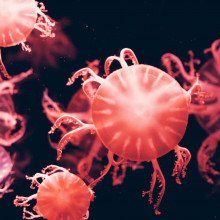
16:26 - Why do deep sea creatures glow?
Why do deep sea creatures glow?
To answer this deep sea question, Julia Ravey talks to deep-sea explorer Diva Amon, the director of non-profit SpeSeas, about the wild and wonderful creatures lurking in the depths of our oceans.
Diva - Oh gosh. That's the hardest question because you do literally see, on every single expedition, something that blows your mind. Normally something that blows your mind every single day of the expedition. If I had to choose just one and I will caveat that by saying there are glowing sharks, there are octopus that look like Dumbo with these doorbell fins on the sides of their heads, there are worms that subsist only on the bones of dead whales, there's all kinds of stuff down there. But if I had to choose one, I would say the 'kiwa crab' also known as the 'yeti crab' and it has another nickname which I'll get onto. Basically, it's a blind white crab that lives in the deep ocean off of Antarctica and it has a super hairy chest and super hairy arms. It uses these hairs, by putting itself in close-to-the-chemical rich water, and it uses these hairs to grow bacteria on the hairs. Then when it gets hungry, it just scrapes the bacteria into its mouth. Basically it has like arm farms, if you will. The best part of this, or the worst part of this depending on how you feel, is that because it has a really hairy chest, it's been nicknamed, the 'hoff crab' after David Hasselhoff.
Julia - The crab with the hairy chest and it's almost like it's walking around with it's lunchbox on its front and it's like, "Come here to the lunchbox" and it's like ready to eat it. Oh my goodness that is incredible. So our listener Jane asked, why is it that creatures living deep in the water glow and does that not attract predators?
Diva - Right. So that's a great question. Once you go past about 400 meters depth in the ocean there is no sunlight, and how do you communicate in the absence of light? You can either use sound or the other alternative is you make your own lights. Lots of animals in the deep sea use something called bioluminesce, where they're actually able to create their own light. They do that sometimes with the help of some bacteria, other times it's just the chemical reaction, but they do it for a variety of different reasons. It tends to be that if it's a defensive function, it's a quick sudden burst whereas if it's an offensive function, then it's more glowing. There's a squid that can just drop one of its arms, which will glow, and then the predator goes off to the arm while the squid is able to get away. That's really one of the main ways that the animals communicate in the deep sea and given the vastness of the deep ocean it actually provides about 96% of all space on earth in which life can live. And because it's so vast, it's now thought that bioluminescence could be the most common form of communication on the planet.
Julia - Wow. I love the squid can just drop one of it's fins like, 'I'm not here'. So when predators eat glowing fish do their stomachs glow?
Diva - A lot of animals in the deep sea actually have black stomachs because they don't want to give themselves away if they eat something that's glowing.
Julia - Oh my goodness, so it's like, 'I didn't eat anything. I'm not here. I'm still hidden.'
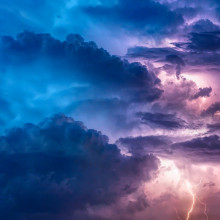
20:27 - What does rain look like on other planets?
What does rain look like on other planets?
Julia Ravey asked exoplanet researcher and author Hannah Wakeford about the bizarre weather on different planets…
Hannah - We have been trying to look for weather on other planets, we found a number of different things, but I'm going to take us back to your set up there, because what you're talking about is something happening on a very particular scale. On a, "I am a human standing in my less than one meter squared and this thing hasn't happened in that tiny little area I occupy on an entire planet." The scales of weather can be very different and result in different predictions. At some point in the UK, we can say 'it's going to snow on this day' and it probably does somewhere. It's all about scales when you talk about weather. Weather and climate is a chaotic system, small changes make big differences to it. When we're talking about looking at alien worlds, other planets, we're talking about the big scale things. We're talking about the general circulation of the atmosphere, saying that predominantly it's cloudy in the UK, that's a large area of our planet, it's normally pretty cloudy there. The prediction of that is much easier to do than the prediction of something that's happening on a small scale. We're looking over an entire planet when we're looking at these alien worlds and we're saying, "we think we understand what is going on across an entire planet." So it's a little bit more predictable in that sense.
Julia - And does rain fall on other planets?
Hannah - Rain like we have here on the earth made of nice water droplets or ice crystals in our snow, or even in our hail, we don't have that on the planets that we've studied so far because our planets are so much hotter. The rain and snow on other planets is actually made of things that we stand on; rocks, liquid glass, molten iron. The rain in some of these planets will be made out of something called corundum, which is the basis of rubies and sapphires. So on another planet, instead of clouds made of water and rain of water coming down, you have clouds made of rubies and sapphires and rain and snow of rubies and sapphires.
Julia - Shower, me and diamonds, like literally.
Hannah - Diamonds are a little bit tricky. Diamonds require way too much pressure and forming clouds of them is very hard, but we can get you some rubies and sapphires.
Julia - I'll take rubies and sapphires any day of the week.

23:13 - How to write a science rap or song?
How to write a science rap or song?
Julia Ravey asked Raven Baxter, a award winning science communicator who creates catchy science songs, how to make a science smash hit...
Music credit: Raven Baxter (Raven the Science Maven), "The Mole, The Dozen's Cousin", Oct 2021
Julia - Raven, you are an absolute pro when it comes to making science make sense and you do this using music. So what are the components of making a good science song or rap?
Raven - First and foremost, if you're looking to use music to communicate science, make sure that you're having fun because when you're excited about what you're talking about it's easier to get other people excited too. Then try to circle around a main idea. What is the main message that you want to communicate to your audience? Do you want them to learn everything about one thing or maybe just get some fun facts or maybe you just want to introduce them to some keywords and vocabulary that can get them on their way to enjoy doing their own research and understanding? Then I love getting people up and dancing so I tend to use really upbeat rap music or hip-hop and things that I want to dance to so that I know maybe someone else wants to dance to it as well. Then when you put all that together, you can make a song or you can even make a music video, like I tend to do. I especially love when people tell me that they use my songs to study for exams, that just warms my heart and I feel like the songs definitely serve their purpose.
Julia - Music is such an accessible tool that can make the science you're communicating reach many ears, but we get many people writing in to us about how to talk about science with people who don't really want to listen. What are your top tips for broaching these types of conversations?
Raven - In the classroom, I'm a student centred teacher and outside of the classroom, I'm like a community centred science communicator. When I have conversations about science or when I'm teaching science, my main goal is to have everything that's coming out of my mouth, be something that lends itself to building community and trust in science. What that means for me is I don't attack people when we have opposing ideals or opinions or worldviews. I want to learn about people around me just as much in a conversation about science as you do at the grocery store. I want to know, 'what's your background?' 'What do you believe in?' 'What's important to you?' 'What are your values?' Those are all important things to consider when you're talking to someone about anything, but especially science because you get to understand a little bit about how they may interpret your information. I always just encourage a two way dialogue. I think sometimes science gets a bad rep for being a one way communication sometimes where we have facts and we say the facts and that's it. But I think when we're having conversations, we have to remember it should always be two way. The last point is that people always think, 'the end goal of every conversation about science, where you're talking to someone who may not want to listen is to convince them that you're right.' That's not necessarily always the case going into a conversation where you are thinking that you have to convince someone or pressure someone to believe you isn't a good situation, especially when you're trying to build trust. Those are the things that I want people to know.

26:50 - Can robots feel pain?
Can robots feel pain?
Julia Ravey asked researcher Beth Singler, who studies how we interact with machines, what pain is and whether robots can detect it.
Beth - Like the question about creativity, it's a question that relies on our understanding and our definition of what pain is and our human understanding of that versus what might operate and work in something that's more mechanical. Pain could be described as a response to toxic or harmful stimuli. In that sense, you can see how robots already do that. If there's something hazardous and they've been programmed to react to hazards, then they can react to it. If you're going to think of that as the same thing as pain, that's quite a mechanistic interpretation. I think there's aspects of pain that are more complex, especially chronic pain in humans that shapes our lived experience. It shapes our emotions and our interactions with other human beings. Again, it goes down to whether you've got a more broad interpretation of what pain is or quite a reductionist mechanistic interpretation that it's something about responding to something that's gone wrong.
Julia - Trish asked, 'Will we understand human consciousness or develop artificial consciousness first?' Which one will happen first?
Beth - This was the topic of our fourth film and I like to joke we dealt with the whole subject of consciousness in 15 minutes. This is something that we really didn't. We touched the surface of thousands of hundreds of years of human conversation around what it is to be conscious, what it is to be self-aware overlapping with all these different conceptions of what it means to be human. I think what's really interesting in the debate about conscious robots is that there are distinct groups where some people are pushing towards this as a way of learning more about human consciousness. If we could replicate something like human consciousness in AI and robots, then that would teach us something about how it works in humans. Other people are very adamant that this is not a path we should go down, that this is not something that actually AI or robots would require or need to be useful to us as human beings. Then you get into the whole muddle ground of, 'we don't really know what it is.' It could turn up through the natural evolution of AI and robots in their iterative versions. In some ways replicating how we evolved over millions of years, evolving over a much shorter space of time, and then that emergent property of consciousness that we don't really understand comes about and we don't necessarily know if will recognize it. It's quite a complex question and there's no simple answer, but if you want to hear a lot of people talk about it, in my fourth film, we tackled this one.

30:57 - December Quiz: Festive Fun!
December Quiz: Festive Fun!
Now it wouldn't be a festive period without a bit of healthy, competitive family fun. So let's pull the cracker on our snow-it-all quiz. Raven Baxtor and Beth Singler, are in team one and Diva Amon and Hannah Wakeford, represent team two. So like the 10 Lords let's leap straight into round one.
Julia - Round one is called festive foliage. We've got Raven and Beth first. When you go out and about this time of year, you can't move for Christmas trees with twinkling lights, pine needles, which end up all over the floor and that lovely fir tree smell. The scent of Christmas trees is generated in part by chemicals called pinenes. As well as smelling divine, these chemicals also play very important roles in helping fir trees to thrive. Which of the following do pinenes do? Do they (a) protect trees from forest fires? (b) attract insects for pollination? Or (c) keep trees cool on hot days?
Beth - Well, I'm thinking, when they're most prevalent and what might be the key thing to get done during that period of time. So maybe it's about attracting insects for pollination, but that's just a guess. I think
Raven - I think that is also the right answer.
Beth - Okay, let's go for that.
Julia - The correct answer is C! Pinenes are a type of terpene, which in hot weather, are thought to be released to prompt a cloud seeding, which is a mechanism that modifies the weather. Pinenes are extremely flammable, so they contribute towards Christmas trees catching alight so easily, and fir trees pollinate using the wind as they don't have flowers to attract bees, or other insects. Bad luck with that one, but you know, we can make it up in the next round, I'm sure. So question two is for Diva and Hannah. Kissing under the mistletoe is a pretty obscure tradition where if two people find themselves under the white berried bearing plant, they can pucker up. The tradition of kissing under mistletoe is thought to have originated in ancient Greece due to the plants association with fertility, but mistletoe isn't quite as romantic as we might think. Which of the following is an ugly truth about mistletoe? (A) Its berries are deadly (B) its growth can kill trees or (C) its presence reduces bird numbers.
Diva - I thought it was A, I thought they were poisonous. Let's go with that.
Julia - The answer is B! Mistletoe is actually a semi-parasite that requires stealing nutrients from its host tree to stay alive. Excessive mistletoe growth can lead to the death of part or in worst cases, the entire tree. It's thought the parasitic nature of mistletoe might be why it got its everlasting association as it can stay green all winter by feeding off its host. Some mistletoes are poisonous, so should avoid being ingested, but they're not thought to be deadly. And several bird surveys have found that the loss of mistletoe from an environment reduces their numbers, hinting It's important for certain ecosystems. So Round two, we can bring it back. Question one for Raven and Beth. A common tree topper decoration is a star. And during the winter months in the Northern hemisphere, we get to spend more time looking at the stars, but in our history and today stars have been used for navigation. One star in particular Polaris or the north star has been a guiding light due to its relatively stable position above the Northern horizon all year round. But what constellation is Polaris a part of? Is it (A) the little bear (B) Orian's belt or (C) Draco the Dragon?
Beth - I really don't know.
Raven - I want to say little bear.
Julia - The correct answer is A, the little bear! Polaris is one of the seven stars, which makes up the little bear constellation, which is also known as the little dipper. And although Polaris is currently our north star, this may change in the future due to the slight shifting of the Earth's axis. And apparently around 2,600 years ago, when the pyramids were being built, it's thought the star Thuban, which is part of Draco the Dragon was the north star. Hannah, is that accurate?
Hannah - Yeah. That's accurate. It is to do with the way the earth rotates around its axis and how that changes over time. So, you know, back in when the dinosaurs lived, it would have been a completely different star across the sky.
Julia - That blew my mind when I found that out. So question two, we're now over to Diva and Hannah again. Electric Christmas tree lights were first wrapped around a Christmas tree in 1882 by Edward H. Johnson. Although it took over 40 years for people to warm to this idea, electric lights are now a central decoration for most trees. The cells in our brains communicate using electricity, equating to roughly 20 Watts of energy. If we went to town and decorated a Christmas tree with a thousand mini LED Christmas lights, how many human brains would we need to power them? Would it be (A) two and three quarter brains (B) three and a half brains or (C) four and a quarter brains.
Hannah - It's going to be lower than you think isn't it. How many watts does it take to light a Christmas tree? Not much. I'm guessing. I'm going to go with A again.
Julia - The correct answer is B! LED string lights use approximately 70 Watts of electricity and that equates to about three and a half human brains. And if we traded these led lights in for incandescent lights, so they're the lights that we used to use, we'd need a lot more human power. Does anyone want to guess how many brains we'd need to light up that type of tree?
Raven - I'm going to ballpark say a hundred.
Diva - I was gonna say 10.
Julia - It's sort of in the middle. It was 20. So, on that note, we are on team A - Raven and Beth - you have one point. Hannah and Diva - we're waiting for the comeback in the final round. So round three is called 'Merry Materials'. So question one - back to Raven and Beth. Wrapping up at this time of year in the Northern hemisphere is essential for keeping warm and across the holiday season. We also use a lot of wrapping paper to cover our gifts. In the UK alone. It's been estimated that the amount of wrapping paper that ends up in the bin at Christmas every year is enough to cover (A) half of the great pyramid of Giza (B) eight empire state buildings, or (C) the city of Cambridge in the UK twice.
Beth - I'm feeling the Cambridge connection. Because that's where I am.
Julia - The answer is C - Cambridge twice. It's estimated that in the UK, we throw away around 83 square kilometers of wrapping paper every Christmas and the area of the city of Cambridge is 40.7 square kilometers. So after wrapping the ground area twice, you'd still have a little bit leftover. And this amount of wrapping paper could cover almost a third of the great pyramid of Khufu in Giza and could cover the empire state building over 10 times. So we've got to make sure the paper is recyclable if we're going to use it. Last question, right, Hannah and Diva, we're going to bring it back. Santa's workshop is in the north pole and he and his helpers are busy making toys all year round. Aside from all the materials required to make gifts, the glaciers and icebergs in the Arctic are made of frozen freshwater. How much of the world's freshwater, as a percentage, is held in these structures? Is it (A) 20%, (B) 30% or (C) 40%?
Hannah - Well, none of those. I thought about three quarters of the world's freshwater was held in glaciers, but you're talking very specifically about the Arctic.
Diva - It's only Arctic glaciers and icebergs, and we're talking about percentage of freshwater?
Hannah - I know that three-quarters of fresh water is held in glaciers. But then the Arctic, what percentage of glaciers are there?
Diva - I mean, I would say 20 or 30 then given what you've just said. I wouldn't say 40.
Hannah - Okay. We've lost already. They've already beaten us. We just need one point.
Diva - Do you want to do middle ground? Okay. Middle ground, middle ground.
Julia - The answer is A! It is estimated 20% of the world's supply of freshwater is held in the glaciers and icebergs in the Arctic. So at the end of the quiz, the champion supreme are Beth and Raven with two points. Hannah and Diva - commiserations. You put in a good stint. But yeah that's our wonderful quiz all wrapped up. That was a pun and I didn't even mean it to be a pun.
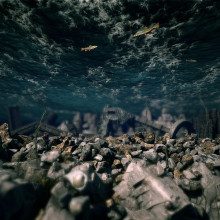
42:32 - How important is deep sea life to our ecosystem?
How important is deep sea life to our ecosystem?
Julia Ravey dives into the importance of the underwater life that we still know so little about with Diva Amon, a deep sea explorer and advocate for protecting our oceans...
Diva - We often think that the deep sea is kind of like out of sight, out of mind and also out of reach. But that is absolutely not the case. I think I've been on 16 research cruises from Antarctica to the Mariana trench to the middle of the Atlantic. And often they explore parts of our planet that no one has been to before that moment. But nearly every single research cruise that I've been on, we get down there and we find evidence of us before anyone has been there. And that might be a piece of our trash, or it might be trawl marks from a fishing net. It's often a really soul crushing point. You're like, 'Hey, no one's actually ever been here and no one's actually ever even seen what lives here, and yet here's our garbage'.
Julia - What’s been the most striking thing that you've seen?
Diva - The bigfin squid was spotted on the ship called the NOAA Okeanos Explorer, but I was actually sailing with them in 2017 in the Gulf of Mexico. And we were exploring a part of the Gulf of Mexico that no one had been to. And a couple of days before, we'd been given two sonar targets to explore. We'd explored one and it turned out to be a shipwreck and it had all this amazing life living on. It really was just an amazing moment. And so it goes without saying that we were all super excited to explore the second sonar target. We touched down on the sea floor about a kilometre deep in the Gulf of Mexico. You could hear a pin drop in that control van because everybody was just almost holding their breath as to what they were going to see. And we started driving towards it, and before we knew it, we were driving through a field of washing machines and dryers and chest freezers and fridges. And it turns out that sonar target that we have been, which was 40 feet long, which we thought was a shipwreck, turned out to be a shipping container. And so here we were in this moment of true exploration and it turned into this very surreal and very sad moment.
Julia - That is so sad. It's like the modern day shipwreck is our trash just sort of being left at the bottom of the ocean.
Diva - I mean, it's an interesting thing, right? Because you can actually, aren't shipwrecks also trash in a way? Sometimes? Depending on how they were lost, some of them are. So, it's like the modern day equivalent.
Julia - Fridges and toilets at the bottom of the ocean. So just how important are these deep sea creatures and their habitats to our ecosystems?
Diva - The deep ocean is, as, as I said earlier, you know, it's, it's the largest part of the planet. It provides about 96% of all space in which life can live. So it's a significant place. And that huge size means that it plays a really important roles in ecosystem services that we rely on and that all life on the planet relies on. So it sequesters carbon and absorbs heat, helping to regulate our climate, which now more than ever is important. It cycles nutrients. It is linked to fisheries that billions of people rely on. And all of these services that we rely on are ultimately, it comes down to the animals that live in the deep sea that are responsible for these things. So this little deep sea worm that lives, you know, five kilometres down in the Atlantic may have a really important function that ultimately plays a big role in, for instance, locking away carbon for thousands, if not millions of years, for instance. But the problem is, because we've explored so little of it for most of it, we can't answer that fundamental question of what lives there, much less questions about the ecology of these animals. What does it eat? How does it reproduce? What role does it play? And if you can't answer those questions, it's a bit hard to put all the puzzle pieces together to understand these big ecosystem services and not just how important they are, but what's making them function in the way that they are.

47:03 - How old is our planet?
How old is our planet?
Julia Ravey asked University of Bristol researcher Hannah Wakeford about giving planets an age...
Hannah - That's a really good question. And that's actually a really difficult thing for us to do, but when we're looking at alien planets, we can guess how old they are roughly by looking at how old their star is. So if we know how old their star is, then we kind of assume that the planet is somewhere around that time. On Earth, we actually use rocks to determine how old our planet is. And we compare that to meteorites that fall on the Earth. Meteorites that come from space and they are showing us the building blocks of our solar system. So if we can compare the ages of those rocks, we can work out how old our planet is.
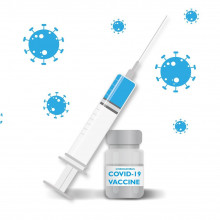
47:49 - Can vaccines help prevent or treat cancer?
Can vaccines help prevent or treat cancer?
Julia Ravey spoke to Raven Baxter, molecular biologist and doctor of science education, about this question on vaccines...
Raven - We have the HPV vaccine, human papilloma virus vaccine, which is a little different from like the vaccines that we normally hear about where scientists are taking pieces of dead viruses basically, or now genetic material, and introducing it into bodies. The vaccines, like the HPV vaccine, they target viruses that can cause cancer. So in this case, cervical cancer, so HPV is a virus that can mutate cells and turn them from "good" cells into "bad" cells that can cause cancer. So going after that virus is a way that we can protect against cancer. So yeah, we do have cancer vaccines.

48:48 - Can we trust machines?
Can we trust machines?
With machines holding more and more personal & private information, Julia Ravey spoke to Beth Singler from the University of Cambridge about our dependence on machines and if we should trust them...
Beth - Oh yes. I mean, it goes back to what we're saying and discussing earlier about all fears about the robot uprising and the robot rebellion and our narratives about how all these things can go horribly wrong. I think it's actually much more important that we have a conversation about how we trust the humans behind the machines. So there's no application at the moment of AI or robotics that isn't being deliberately implemented by humans, given values and incentives in particular directions, by a human being. Every single recommendation system behind the scenes and things like YouTube - if you go on social media, on Facebook - everything that is being selected for you is because a human decided that we would prioritise specific things. So we need to have a very strongly worded discussion about what kind of influence corporations and the individuals within them have on those decision-making algorithms. That, in a sense, pushes corporations into the realm of artificial agents. But again, we want to be sure that we know that there are still humans in the loop in both positive and negative ways.
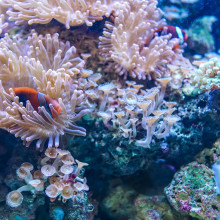
50:22 - What is coral bleaching and why is it harmful?
What is coral bleaching and why is it harmful?
Julia Ravey spoke to deep-sea explorer Diva Amon about what impact coral bleaching could have on our ocean ecosystems...
Diva - Corals are very sensitive to temperature and of course, corals are animals, right? Let's start there. And so a lot of them have a symbiont, which is fundamental to keeping them alive. And when they get very, very hot that symbiont can die. And once that happens, the coral will begin to lose its tissue and die and go white. Sometimes coral can be bleached and not fully die and it can come back, but often it's much reduced from what it was. And that's really bad of course, because corals are like this three-dimensional structure that is basically a home, a shelter, it's such a key part of our shallow waters ecosystems and our coral reef ecosystems that to lose them would just be absolutely awful. And it's thought that we may lose them by 2050, if we continue on this trajectory that we currently are with global temperatures warming. In terms of why is ocean life so colourful, there's so many different reasons, but I'd like to sort of tweak the question a little bit and say, ask why is deep sea life colourful? Because that actually doesn't make sense because you're living in the dark. So why do you need colour? And actually a lot of life in the deep ocean can be red or purple or mauve. And the reason for that is that as you go deeper in the ocean, your light not only becomes less, but you actually lose wavelengths of light. And the first wavelength of light to be lost is red. And so that means that you actually can't see red from very, very shallow as you go deeper. That's why the ocean looks blue because blue is one of the last wavelengths to be left. And so if you're red in the deep sea, because there's no red light down there, or white lights that matter, it means that you're basically wearing an invisibility cloak. And so all of these animals are sort of shrouded in darkness. And then there are a lot of other animals that are white, that are black, that are yellow. I mean, really it confounds you as to what, how and why there is so much color down in the deep sea. And one of the other main reasons is that actually the color has nothing to do with being seen. The color is just a byproduct of something else going on. So it doesn't mean to be yellow. It doesn't mean to be purple. It just is that way because of something else within their body.
Julia - So beautiful to look out, I'm very jealous you get to look at it on a very regular basis.
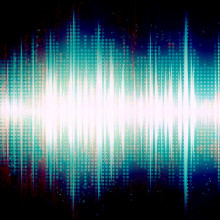
53:30 - What is December's mystery sound?
What is December's mystery sound?
We challenged our experts to guess what is making this strange sound. Can you guess what it is?
The answer is: a snowball in slow motion!










Comments
Add a comment